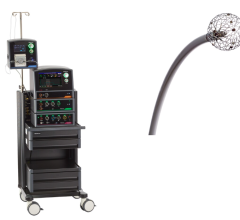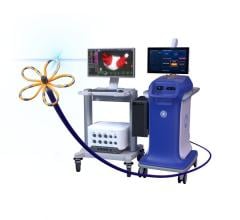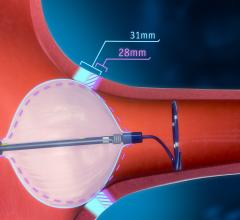
July 18, 2011 — An article published in the European Journal of Cardio-Thoracic Surgery demonstrates the importance of a comprehensive epicardial lesion pattern to confirm conduction block in radiofrequency ablation for the successful treatment of persistent atrial fibrillation (AF). The epicardial ablation device is manufactured by nContact Inc.
AF is the most common cardiac arrhythmia (abnormal heartbeat), affecting an estimated 5 million Americans and millions more worldwide. The study focused on persistent AF patients who have historically been the most challenging populations to treat because the condition is typically associated with structural heart disease, resulting in enlarged atria. The article discusses potential required elements to bring viable treatment options to this patient population.
Treating chronic AF using existing surgical and catheter approaches often does not assure complete isolation or interruption of re-entrant conduction pathways. It can also produce limited long-term outcomes. As described in the article, the use of nContact's guided coagulation system, which produces long, linear lesions epicardially on a beating heart, may be connected into a complete, comprehensive, bi-atrial pattern based on the cut and sew Maze pattern, yielding meaningful long-term results.
The article discusses the importance of improving procedural effectiveness in treating AF by utilizing a comprehensive, bi-atrial lesion pattern and confirming conduction block. The ability to perform epicardial ablation on a beating heart enables the evaluation of conduction block during lesion creation.
Prof. Borut Gersak, M.D., Ph.D., chief of the department of cardiovascular surgery at University Medical Center Ljubljana, Slovenia, stated, "The confirmation of exit block at 15 mA improves procedural effectiveness in treating AF. Performing epicardial ablation on a beating heart avoids cardiopulmonary bypass and aortic cross clamping associated with traditional procedures such as the cut and sew Maze, and allows for confirmation of conduction block."
Since the heart remains electrically functional during the procedure, metrics may be evaluated intra-operatively to allow creation of additional lesions when block testing identifies a gap.
The article concludes that patients in whom exit block was confirmed at 15 mA were statistically more likely to have successful clinical outcomes. Results indicate that at 12 months, 87 percent of patients with exit block confirmed were in sinus rhythm compared with 57 percent patients in which exit block was not tested. In addition, the creation of a comprehensive bi-atrial lesion pattern resulted in an increase in left ventricular ejection fraction and a reduction in left atrial size.
"The conclusion of the surgical work was a complete, comprehensive lesion pattern with confirmation from intra-operative diagnostics to predict success," Gersak added. "In order to drive cardiology referrals and appeal to patients, access needs to avoid chest incisions characteristic of traditional surgical approaches. The future of AF treatment must combine epicardial ablation elements with electrophysiologist diagnostic and ablation technologies. Only converging the best practices from surgeons and EPs will provide a simpler, faster, safer, and more effective procedure. This surgical experience and enabling technology have provided the basis for development of the convergent procedure; closed chest epicardial ablation combined with endocardial catheter ablation in a single procedure. The procedure does not require chest incisions or ports, lung deflation or heart dissections, and incorporates EP mapping and diagnostic endpoints to determine procedure completion."
For more information: www.ncontactinc.com


 October 30, 2024
October 30, 2024 








